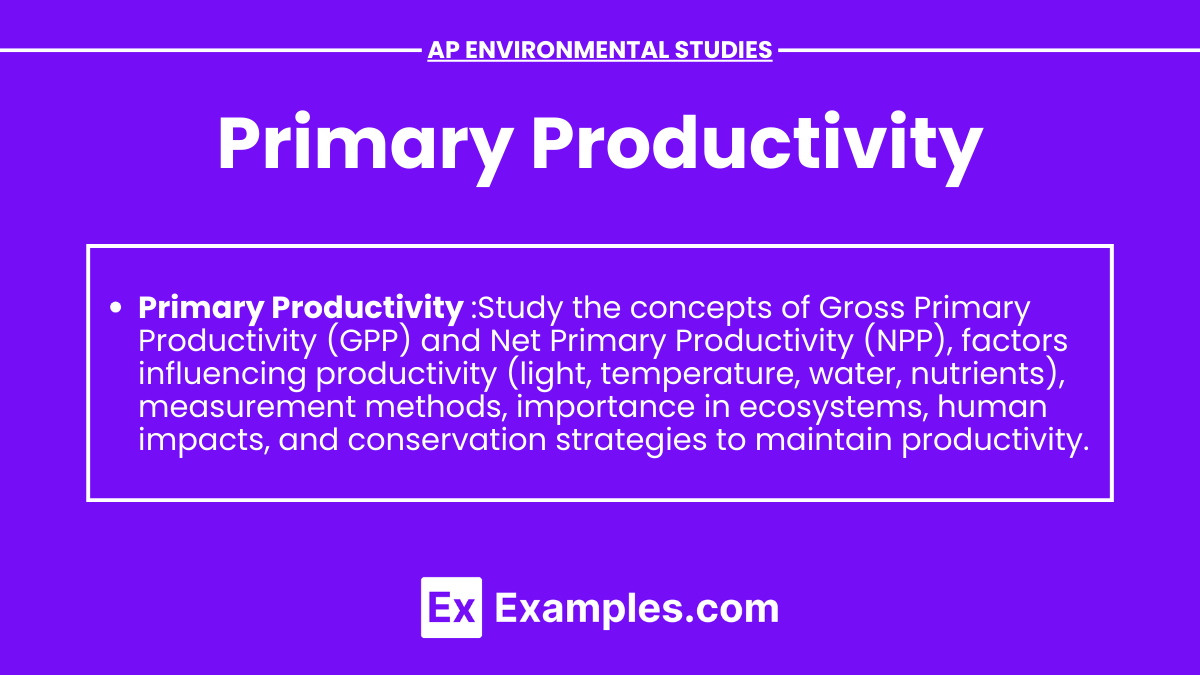Primary productivity refers to the rate at which autotrophs, such as plants and algae, convert solar energy into chemical energy through photosynthesis, forming the foundation of the food web. This process involves capturing carbon dioxide and producing organic compounds that fuel ecosystem growth and sustain life. Primary productivity is measured as Gross Primary Productivity (GPP), the total energy captured, and Net Primary Productivity (NPP), the energy remaining after accounting for respiration. Factors such as light, temperature, water, and nutrient availability significantly influence primary productivity, which varies across different ecosystems and is vital for understanding ecological dynamics and human impacts on the environment.
Learning Objectives
By studying primary productivity, students should aim to understand the concepts of Gross Primary Productivity (GPP) and Net Primary Productivity (NPP), and the factors influencing these rates, such as light, temperature, water, and nutrient availability. They should be able to measure primary productivity in various ecosystems, recognize its role in energy flow and carbon cycling, and evaluate human impacts like deforestation and climate change on productivity. Additionally, students should develop the ability to apply this knowledge to conservation efforts and sustainable practices to maintain ecosystem health and productivity.
Definition
- Primary Productivity: The rate at which energy is converted by photosynthetic and chemosynthetic autotrophs to organic substances. It represents the energy available for the growth and reproduction of primary producers and the base of the food web.
Types of Primary Productivity
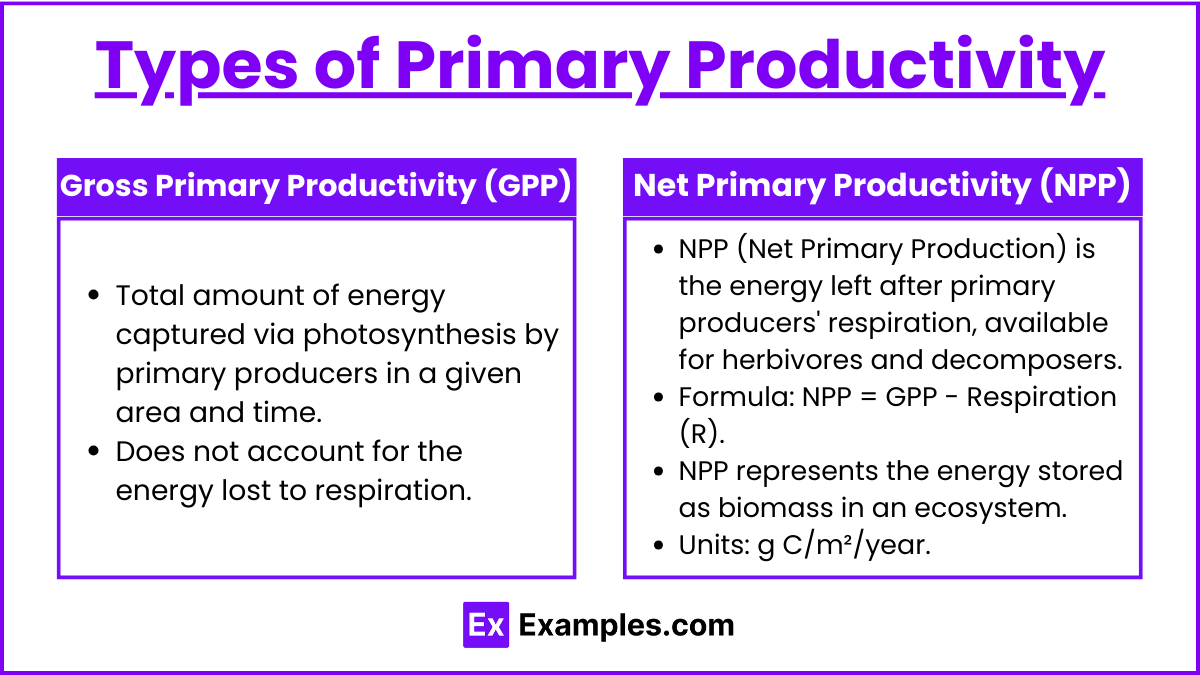
- Gross Primary Productivity (GPP):
- Total amount of energy captured via photosynthesis by primary producers in a given area and time.
- Does not account for the energy lost to respiration.
- Net Primary Productivity (NPP):
- Energy that remains after primary producers’ respiration, available for consumption by herbivores and decomposers.
- NPP = GPP – Respiration (R).
- Represents the energy stored as biomass in an ecosystem.
- Units: Typically measured in grams of carbon per square meter per year (g C/m²/year).
Factors Affecting Primary Productivity
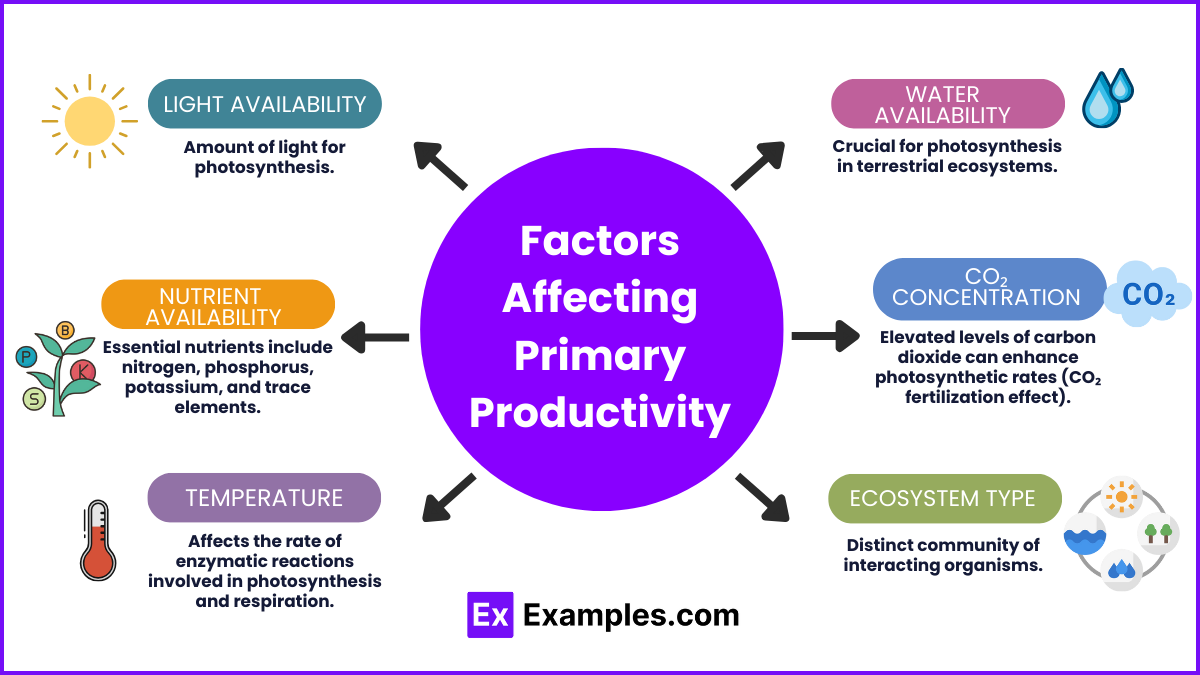
- Light Availability:
- Photosynthetically Active Radiation (PAR): The range of light wavelengths that can be used in photosynthesis (400-700 nm).
- Seasonal and latitudinal variations in light intensity and duration.
- Nutrient Availability:
- Essential nutrients include nitrogen, phosphorus, potassium, and trace elements.
- Nutrient limitations can constrain productivity, leading to phenomena like eutrophication in aquatic systems.
- Temperature:
- Affects the rate of enzymatic reactions involved in photosynthesis and respiration.
- Optimal temperature ranges vary for different ecosystems.
- Water Availability:
- Crucial for photosynthesis in terrestrial ecosystems.
- Influences productivity in both terrestrial and aquatic ecosystems.
- CO₂ Concentration:
- Elevated levels of carbon dioxide can enhance photosynthetic rates (CO₂ fertilization effect).
- Ecosystem Type:
- Tropical rainforests and wetlands tend to have high NPP.
- Deserts and tundras have low NPP due to extreme conditions.
Measuring Primary Productivity
- Terrestrial Ecosystems:
- Biomass Measurement: Harvest method (measuring biomass before and after a growing season).
- Gas Exchange: Measuring the uptake of CO₂ in a controlled environment.
- Aquatic Ecosystems:
- Light and Dark Bottle Method: Measuring changes in oxygen concentration in light (photosynthesis + respiration) and dark (respiration only) conditions.
- Remote Sensing: Using satellite data to assess chlorophyll concentrations and estimate productivity.
Importance of Primary Productivity
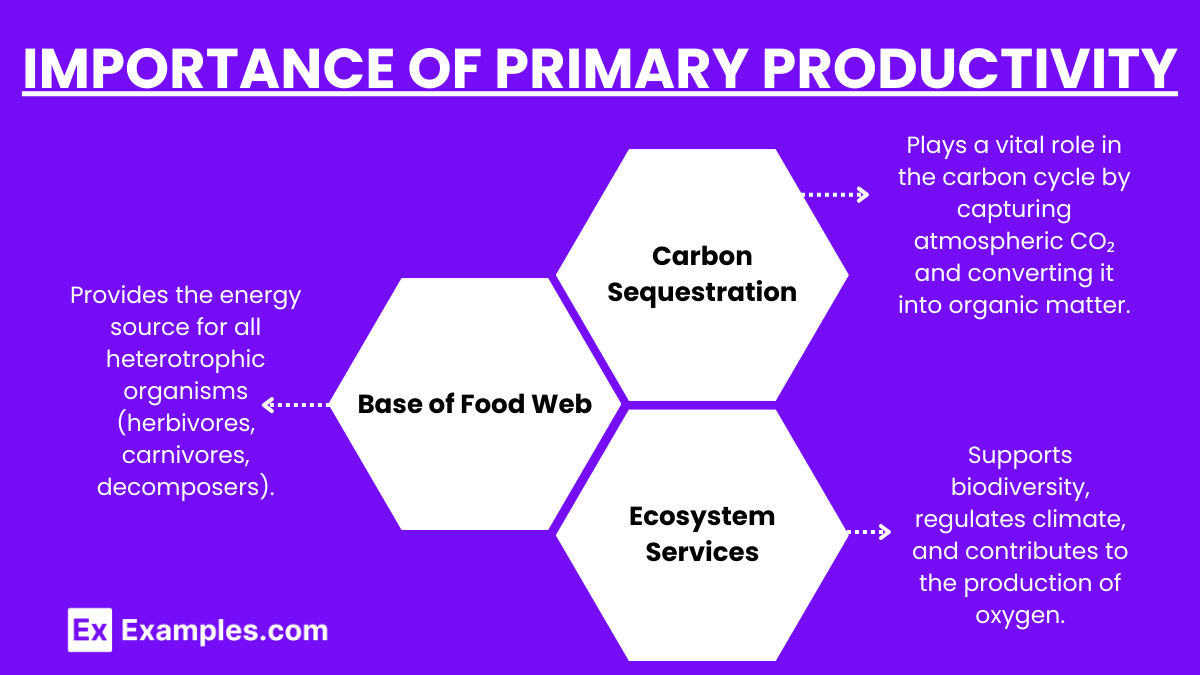
- Base of Food Web: Provides the energy source for all heterotrophic organisms (herbivores, carnivores, decomposers).
- Carbon Sequestration: Plays a vital role in the carbon cycle by capturing atmospheric CO₂ and converting it into organic matter.
- Ecosystem Services: Supports biodiversity, regulates climate, and contributes to the production of oxygen.
Global Patterns of Primary Productivity
- Terrestrial Productivity:
- Highest in tropical rainforests due to abundant sunlight, warm temperatures, and ample rainfall.
- Lower in deserts, tundras, and boreal forests.
- Aquatic Productivity:
- Coastal areas and upwelling zones have high productivity due to nutrient-rich waters.
- Open ocean has relatively low productivity except in regions with high nutrient availability (e.g., equatorial upwelling zones).
Human Impacts on Primary Productivity
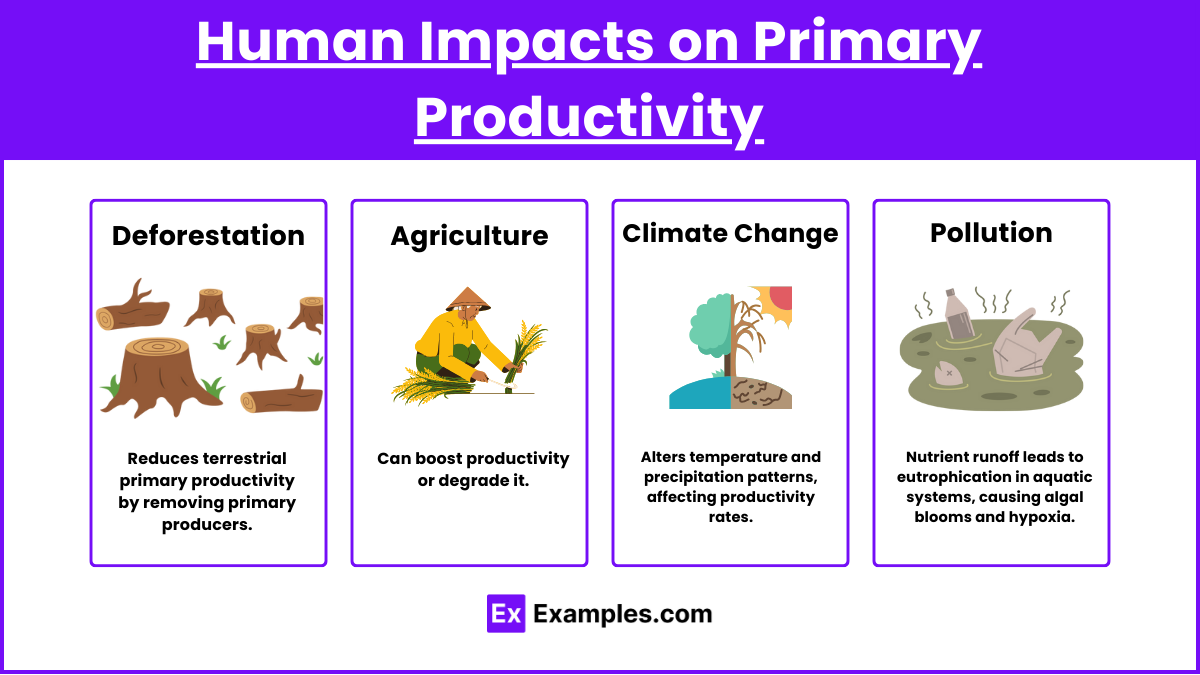
- Deforestation: Reduces terrestrial primary productivity by removing primary producers.
- Agriculture: Can both enhance productivity through fertilization and irrigation or degrade it through soil erosion and nutrient depletion.
- Climate Change: Alters temperature and precipitation patterns, affecting productivity rates.
- Pollution: Nutrient runoff leads to eutrophication in aquatic systems, causing algal blooms and hypoxia.
Conservation and Management
- Sustainable Practices: Implementing techniques like crop rotation, agroforestry, and organic farming to maintain soil health and productivity.
- Protected Areas: Establishing reserves to conserve high-productivity ecosystems like tropical rainforests and wetlands.
- Restoration Ecology: Rehabilitating degraded ecosystems to restore their productivity.
Understanding primary productivity is crucial for grasping how energy flows through ecosystems, supporting biodiversity and the services ecosystems provide. This knowledge helps in making informed decisions about conservation and sustainable resource management.

